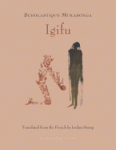 Igifu
Igifu
by Scholastique Mukasonga [Jordan Stump, translator]
Archipelago Books
“You won’t find your dead in the graves or the bones or the latrine. That’s now where they’re waiting for you. They’re inside you. They only survive in you, and you only survive through them. But from now on you’ll find all your strength in them, there’s no other choice, and no one can take that strength away from you.” —A church guide in “Grief,” from Igifu
Igifu collects five short stories by Scholastique Mukasonga, a Tutsi-Rwandan writer, on themes of famine, food, fear, beauty, and grief. (And translated by Jordan Stump, whose choices of books to translate can set the directions publishers follow.) The time in which the stories occur aren’t always clear to me, since the occasional massacre of thousands of Tutsis by Hutus has been a thing since at least the last 1950s: The memories and influences of massacres switch from background to foreground but are always clearly visible—it’s not clear that things such as year are relevant, given the conditions.
In “The Glorious Cow,” a village of cowherds have been displaced by Rwandan Hutus to a village in Burundi along Lake Cyohoha, which borders Rwanda. Burundi cultural practices are forced upon them, meaning they must drink goats’ milk rather than cows’ and use a particular gourd for carrying water rather than churning butter. The cultural differences are expressed as repugnance due to the spiritual significance of the materials used for specific uses that can’t be, essentially, Kashered. Additionally, rather than cowherd, they are required to grow coffee beans by Belgian government running Burundi, which provides the rudimentary housing in the displaced-persons village. (The economics of coerced prostitution (“because we give you X, you owe us Y”) arises again in the last story, “Grief.”)
The Tutsi’s refugee status has lasted so long that many of the children are too young to have ever seen a cow before, even though their parents maintain the rituals of cow herding, which are as much religious and civil requirements as they are jobs. Every aspect of cowherding—including picking up feces—is presented as a profound duty, honor, and act of respect toward the cows. The Tutsi’s blend this sort of pantheism with their Catholicism, dipping their rosaries, for instance, in the cow’s water for luck.
In contrast, the narrator’s father takes a dim view of how the Bageseras, a Burundi tribe, herd their cattle:
My father didn’t approve of the way the Bageseras treated their cows. . . “[T]hey let them mix with their goats, they’re always using the staff, they don’t even know them by sight. You’ve got to call a cow by her name, flatter her, whisper in her ear, sing her praises. And when you take her to see the chief, you drape her in flowers and beads. But when the Bageseras are out with their herds it makes you ashamed just to see them.”
Then, as the refugees are pining for the cattle they’ve lost, another displaced Tutsi comes through their village with his cows. This is cause for elation among everyone. For the children, it is the first chance to witness the life they only ever heard their parents discuss, smell the smells and taste the tastes they never knew. The visitors’ stay in their displaced village is short, but enjoyable. (The visitors were under threat of the government, which wanted to kill them and take their cattle.)
The narrator grows up and gets a college degree, eventually teaching at a private university in Rwanda, where “I share beer with my Hutu neighbor. He’s my neighbor, that’s all I want to know about him.”
“Fear” occurs sometime after 1963 and up to 1994, describing a child’s experience of school and going to and from school and home. Fear permeates every experience of every day. And if disaster does not befall today, it’s just been delayed until tomorrow. Children hide in the woods along the roads they walk to school because soldiers like to drive past and shoot at their feet and toss an occasional grenade. For laughs. The teacher keeps his eyes looking out the windows while lecturing his students, just in case he can see soldiers arriving in the distance. Unsurprisingly, the children find it difficult to focus on their homework or memorize anything.
In “The Curse of Beauty,” the narrator describes the undesirability of beauty for Tutsi women—in particular, Helena, through which Hutu and white sexism and bigotry can be explored. Too beautiful for Tutsi men—her upkeep in make-up and fine clothing require better-paying jobs than most Tutsi men are allowed to have—Helena cannot be wed to a Hutu man either, since bigotry among the Hutus would never permit such an outrage, and no white men would seek a permanent relationship with her, either. That leaves concubinage to a Hutu businessman, someone who can discretely show her off, father her children, and eventually abandon once she passes her “best if used by” date. Her fate, however unpredictable, ultimately, highlights the bars of her cage, no matter how high she rose.
The last story, “Grief,” is about a woman returning to Rwanda to visit the places her family members were massacred by Hutus, along with thousands of other Tutsis, while she was safe in another country. A guide at a church in the city where her family was killed tells her,
“We’ve got everyone who was here in the church, and all of the bones we could find in the hills, left behind by the jackals and abandoned dogs. Even the schoolchildren went off to gather bones during vacations and days off. I hear there are going to be display cases, like at the Pakistani’s shop on the marketplace. Your family’s here in these bags, but no one can tell whose bones are whose. You can only make out the babies’ skulls, they fit on the palm of your hand. But what I can tell you is that your father isn’t here, his bones are still up there where he lived, at Gihanga, but don’t you go looking for them, they’re someplace where you shouldn’t see them.”
 Surviving Autocracy
Surviving Autocracy
By Masha Gessen
Riverhead Books
In Surviving Autocracy, Masha Gessen (who identifies as “they”) writes as both a cultural critic and as one who knows well the politics of the U.S. and Russia. Gessen, born in Russia, emigrated to New York in 1981, while in their early teens, with their parents and brother, Keith (co-founder of n+1 magazine). Since then, Gessen has travelled often to Russia as a reporter, and was and remains an early and consistent critic of Putin, the autocratic leader Trump wishes to emulate.
Gessen analyzes how the Trump Administration and its minions coerced buy-in from the news media sources that reported and questioned Trump officials, thereby “normalizing” the power dynamic dictating that the media are the enemy of the people, and that facts are what Trump—not others—claim they are, even if these “facts” change by the hour. The Trump Administration imposed random, petty ad hoc rules on reporters as a show of power—but because the media outlets wanted access to the White House, they quickly acquiesced to such small-minded requirements in order to get a story. But once begun, the power dynamic between the two only worsened for the media as long as the media refused to call a lie a lie. This willingness on the part of the new media to kowtow in the face of blatant lies only further eroded the public’s trust of the various news media, whose subservience to the Trump administration in the name of getting a story signified their guilt, as accused by Trump and his minions.
Russian conspiracy theories are deflated that posit a grand unifying theme of exchanges between the Trump family and the Russian government (or Putin personally). “Overarching” and “umbrella” imply planning, a concept not in the Trump playbook, and not for the least reason that he lacks the intellect required for planning anything.
Instead of conspiracy, Gessen says that a careful look at the schemes offered by both the Trump and Russian sides shows that in place of a grand scheme to turn the U.S. into a Russian satellite are numerous low-level hustles headed by groups of mafioso-types trying to scam each other and failing 95% of the time because each side came to realize the other side was trying to scam them, too. In essence, although Trump heads the world’s wealthiest and most powerful nation, he still thinks at the scale of a crooked numbers runner operating out of the back of a party story. Part of Trump’s problem, Gessen implies, is that he’s too lazy and stupid to have what it takes for great ambition. Which is just as well. We’ve got problems enough.
“Trump has successfully reframed America, stripping it of its ideals, dumbing it down, and reducing it to a nation at war against people who want to join it.”
“When the time for recovery comes, as it inevitably will,” Gessen says, “we will need to do the work or rebuilding a sense of shared reality.”
For journalists, the task is much bigger than returning to an imagined state of normalcy before Trump, or even than deciding to retire some words and rehabilitate others. A new focus on using words intentionally will not be a matter for usage manuals but rather will required that journalists accept a responsibility that anodyne headlines, equivocal statements, and the style of extreme restraint have helped avoid. To state directly what they are seeing, journalists will have to reveal where they stand. To tell stories that situate the current moment in history, journalists will have to acknowledge that the media is inherently a political actor and decisions journalists make—which words to use and which stories to tell—are political decisions. And to make these decisions, journalists, too, will need to abandon the idea that politics is the province of technocrats—and accept their responsibility or shaping and facilitating the political conversation citizens must have in a democracy.
Deadly Prey: Hand-Painted Movie Posters from Ghana
Perfectly Acceptable
What makes hand-painted movie posters from Ghana so perfect? Terry Zwigoff’s introduction pretty much sums it up: “An uneasy marriage of homemade, surreal outsider art in service to commercial demands.” The history behind them is this: By the late 1970s, much of Ghana was still without electricity, and thus unable to watch films. One enterprising young man decided to buy a moped, a TV set, VCR player, and generator, and tour the countryside with whatever he was able to duplicate. To build an audience, posters needed to be painted and paraded around the villages to stir up interest. Upon what basis the artists imagined a film’s plot isn’t always clear, and sometimes beside the point.
The paintings—on canvas bags—use garish colors and violence to catch the eye. Despite the prevalence of guns and explosions, the primary form of death depicted is decapitation. But what the poster for “Mrs Doubfire” lacks, for instance, in decapitation it makes up for by Mrs Doubtfire plunging a broomstick through a misfortunate’s right eye and skull.
The painting genre ended as a trade in Ghaha in the early 90s with the spread of electrification and other technological advancements that ended the village-to-village movie circuit. But a video store owner in Chicago discovered the work (as have others before him), and now about 20 orders a month come in to his store, Odd Obsession, for custom posters by half a dozen Ghanan artists he’s in contact who to paint their interpretation of the films in movie-poster format.
This is the kind of thing you’ll like if you like this kind of thing. Pretty close to Platonic ideals.
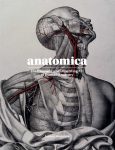 Anatomica: The Exquisite & Unsettling Art of Human Anatomy
Anatomica: The Exquisite & Unsettling Art of Human Anatomy
By Joanna Eberstein
Lawrence King
Amply illustrated, Joanna Eberstein’s Anatomica: The Exquisite & Unsettling Art of Human Anatomy provides a lush visual overview of (per the table of contents) “The Full Body,” “The Dissected Body,” “Procreation,” “Upper Body,” and “Lower Body.” As the books’ subtitle implies, the pictures join the morality and storytelling of art to the scientist’s scalpel. It’s not just the human body that is endlessly fascinating, but also the media in which it’s presented and discussed—sketches, paintings, sculptures, and more.
Anatomica provides an overview of several centuries’ worth of studies of every part of human anatomy by scholars, scientists, and artists from around the world, with examples of their work representing philosophical and (pre)scientific ideas of representation and the evolving assumptions regarding, for instance, pregnancy, vision, and musculature.
The prose is accessible and meant for a general audience. Trigger warning: members of the general audience who don’t think books about anatomy should necessarily include depictions of the body in various states of unclad wholeness are advised to stay away. Only the curious need apply.


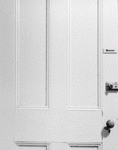 Cover to Cover
Cover to Cover
By Michael Snow
Primary Information
A facsimile reprint of an enjoyably disorienting book of photographs depicting Snow performing a series of mundane acts: opening a door, walking to his truck and pulling away, picking up and putting down a book from a coffee table. Each photograph has its twin in this narrative: one from behind and, from the same distance, one in front. (The photographers documenting Snow’s actions make no efforts to hide themselves.) But while flipping the pages, some of the photographs turn out to be photos of photos—and somebody’s hand holding the photos. At a couple of points the photos are turned upside down, and so must be the book to keep following the narrative. Thus, to go sequentially from cover to cover requires reading from left to right as well as right to left while turning the book. A highly recommended gem.
Here is a brief introduction to Michael Snow.
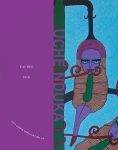 Facing You
Facing You
By Uche Nduka
City Lights
A collection of mostly erotic poems of seduction, sex, and love by the Nigerian-American poet Uche Nduka, blending the personal and political. On love (from “I Haven’t Seen Enough of You”): “Must the poem / only catch me / behaving correctly?”
You came.
You came closer
to read the lines
written across my body.
On politics (from “Ponder the Grit”):
On this black sand
mayhem is not misdirection.
I can’t take
their totalitarian logic
anymore. Don’t cover
this hiatus in fellow-feeling
with mumbo-jumbo. I’m
not here to sound grand
about the Double Agents
of designer protest.
And the two together, which meet “Somewhere between your crotch / and a copy of the Declaration of Independence” (“For the Record”).
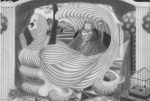 Copy Kitty
Copy Kitty
By Kyung Me
2d Cloud
Copy Kitty consists graphite pictures by Kyung Me with the same elements: landscape-dimensioned depictions of a waifish young man, a lioness-humanoid, and some type of bird I don’t recognize, set atop gridwork. Although the publisher’s PR claims that the book is “[f]illed with Korean cultural references, Looney Tunes and 50s references” (all of which elude my eye here), that assertion seems less relevant than the sense of implied meaning: as long as the iconography remains obscure, we call the pictures “surrealistic”; if we knew what they meant, it would be Symbolism, along with the mysticism and decadence stirred in its wake. But the repeated elements here are, I think, more suggestive of meaning than actually possessed of meaning. Pictures feel mysterious when containing objects whose appearance seems incongruous to the rest of the scene, because viewers ascribe intent to incongruity (“everything happens for a reason”). Mysterious pictures tantalize us with promise of hidden knowledge because we associate repetition and pattern of totemic / incongruous objects with meaning. So the fun of reading Copy Kitty is found in following where the hints and associations of the pictures take our imagination. The more layers of nuance, the more visual information for our brains to imagine and connect imagined dots
See more of Kyung Me’s fascinating artwork at Sunflowercat.com


